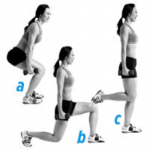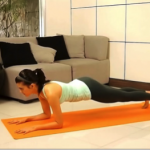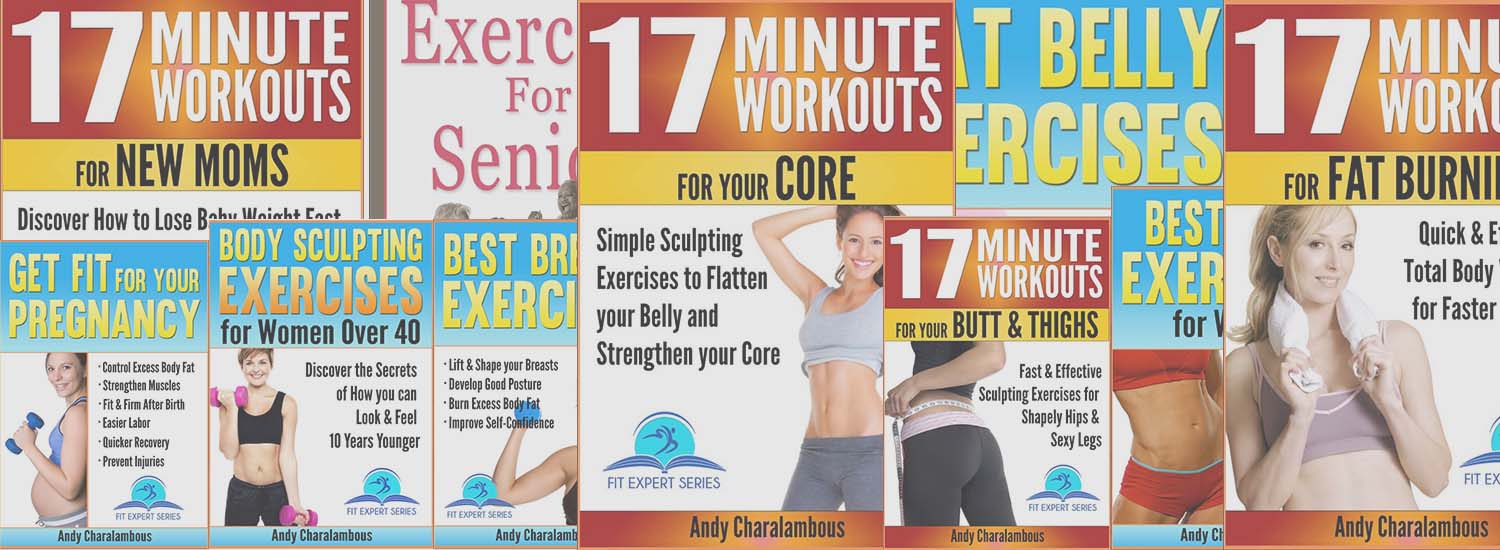Making Your Posture a Priority
We’ve all been lectured at some point in our lives being told to “Sit up straight.” by either our loved ones and/or teachers. At a young age, it can be challenging to uphold this task as our minds are busy bouncing from one idea to the next and we often received these scolding demands without any explanation of why it was so important to “Sit up right!” at the dinner table or “Don’t slouch at your desk.” so naturally, some of us formed the habit of bad posture. It can be difficult to practice something you’re told is important when you’re oblivious to its relevance. Unfortunately, if you are like more than half of America, you finally understand why posture was so important as a youngster but it can be difficult to correct the slouching or bending habit after years of sitting or standing incorrectly. Well lucky for you, there’s Hope!
What is affected?
Back- There are three natural curves:
- Cervical Curve- A slight forward curve in the neck
- Thoracic Curve- A slight backward curve in the upper back
- Lumbar Curve- A slight forward curve in the lower back
In order to maintain good posture you must keep these three curves in a balanced alignment.
Muscles- Weak abominable, hip flexors and legs muscles cannot fully support the natural curves in your back.
Joints- Hip flexors, ankle joints, and knee joints balance the natural curves in your back which make it possible to maintain good posture.
Did You Know?
Your posture has the ability to call the shots on your physical well being and how you are perceived by others? That’s right, the way you sit and stand determines:
Your Breathing and Lung Capacity
Have you ever tried to blow up a balloon with a bag of sand or paper weight sitting on it? Seems nearly impossible doesn’t it? Well the same notion can be applied to slouching for long periods of time on a daily basis. Imagine your lungs are 2 balloons and that as you’re slumping over or slouching throughout the day; your body is the paper weight restricting your lungs from becoming fully inflated. The less oxygen delivered to your respiratory system, the harder it becomes to breath, and even think because lung health equals brain health. To combat this, try to create the habit of being consistently aware of how you are sitting at work, the dinner table, and how you are standing. If you feel as though your air is being restricted, you may want to roll your shoulders back, stick your chest out, and elongate your spine to make sure your lungs are getting the oxygen they crave. Better breathing means increased overall comfort and clearer thinking for you!
Your Perceived Confidence Level
Though it can seem unfair that people are often judged by their appearance 1st and their personality 2nd, it’s the world we live in. What would be your first impression of someone greeting you in a sluggish or slumped stance? Maybe that they weren’t the most self assured or confident? Your presumptions may very well be incorrect but often times your posture is an indicator of how you feel about yourself. If the overall goal is to paint a picture of poise and well balanced self esteem, get that spine aligned and you’re half way there!
Your energy levels and Overall Immunity
The average human head takes up about 8% of the body’s total mass. In addition to that, every time you move your head an inch or so forward, its weight doubles and that’s pretty much like holding a bowling ball on your shoulders for 16 hours a day. This means increased lbs on the upper back, neck, and shoulders. Consequently, your upper body is literally forced to consistently uphold and contract the head while in this strained position and if your muscles are worked too hard, pain and fatigue are sure to follow. This condition is known as FHP (Forward Head Posture) and restricts the oxygen capacity in the lungs. When muscles work beyond their capacity, lactic acid can cause cramps in the shoulders and neck which yield headaches and frequent nap requirements. 🙂
Your long-term Health
Bad posture can negatively impact the overall health you experience in the abdominal region long-term as it has been linked to osteoporosis and that spare tire that magically appears as the years progress.
Combatting Bad Posture
Even if you’ve spent half your life practicing poor posture, it’s never too late to begin again!
Stability Ball vs. the Office Chair

It seems Corporate America has figured out a way to consistently practice correct posture with the use of the stability ball. That’s right, the same exercise ball we use to get our abs in shape can help improve posture! Some employees opt for this instead of the traditional office chair because the ball literally forces the individual into an upward seated position as there is no added support for the back. When used regularly, the stability ball can alleviate back pain, tone your core muscles, and increase the need to stretch.
Exercise
Yoga and Pilates
Research shows that therapeutic yoga can actually improve posture and overall flexibility and back health as it increases flexibility and strength. You may also get some relaxation and stress management out of the deal as well.
 Lower Body Exercise
Lower Body Exercise
Leg day is beneficial in more ways than one so as you are building strength in your quads, hamstrings, and back, take comfort in knowing you are also building on the foundation of a strong lumbar vertebrae and better overall posture.
Planking
Planking is the newest phenomenon that is taking social media by storm in the form of different challenges on both Instagram and Facebook. Its benefits are mostly associated with the creation of a strong core and abdominal muscles but it is also the most effective way to build healthy back and spinal alignment.
Maintaining Your Good Posture
Now that you’ve been armed with the many ways to acquire proper posture, maintenance is key!
- If you don’t already own a firm mattress, it may be smart to invest in one, a bad mattress holds the power to make or break your posture.
- Aim to avoid standing or sitting in one position for long periods of time. If your occupation requires you to sit or stand, try taking a 10 minute break every other hour to get your body in motion or simply perform a few stretching exercises to break routine a bit.
- Exercise at least 3 days out of the week focusing on your lower body to build lower back muscles, glutes, and hamstrings.
- Wear comfortable and supportive shoes and stray away from frequenting high heels and platforms ladies.
- Keep your head erect and your feet pointed in the direction you are going.
Remember your posture has the ability to alter your mood, health, and how others perceive you… by making it a priority, there’s no other way to go but up!
REFERENCE: American Physical Therapy Association;The Secret of Good Posture: A Physical Therapists’s Perspective-c/o 1998 APTA NASM Essentials of Personal Fitness Training: 4th Edition.
 It seems Corporate America has figured out a way to consistently practice correct posture with the use of the stability ball. That’s right, the same exercise ball we use to get our abs in shape can help improve posture! Some employees opt for this instead of the traditional office chair because the ball literally forces the individual into an upward seated position as there is no added support for the back. When used regularly, the stability ball can alleviate back pain, tone your core muscles, and increase the need to stretch.
Exercise
Yoga and Pilates
It seems Corporate America has figured out a way to consistently practice correct posture with the use of the stability ball. That’s right, the same exercise ball we use to get our abs in shape can help improve posture! Some employees opt for this instead of the traditional office chair because the ball literally forces the individual into an upward seated position as there is no added support for the back. When used regularly, the stability ball can alleviate back pain, tone your core muscles, and increase the need to stretch.
Exercise
Yoga and Pilates Research shows that therapeutic yoga can actually improve posture and overall flexibility and back health as it increases flexibility and strength. You may also get some relaxation and stress management out of the deal as well.
Research shows that therapeutic yoga can actually improve posture and overall flexibility and back health as it increases flexibility and strength. You may also get some relaxation and stress management out of the deal as well.
 Lower Body Exercise
Leg day is beneficial in more ways than one so as you are building strength in your quads, hamstrings, and back, take comfort in knowing you are also building on the foundation of a strong lumbar vertebrae and better overall posture.
Planking
Lower Body Exercise
Leg day is beneficial in more ways than one so as you are building strength in your quads, hamstrings, and back, take comfort in knowing you are also building on the foundation of a strong lumbar vertebrae and better overall posture.
Planking Planking is the newest phenomenon that is taking social media by storm in the form of different challenges on both Instagram and Facebook. Its benefits are mostly associated with the creation of a strong core and abdominal muscles but it is also the most effective way to build healthy back and spinal alignment.
Planking is the newest phenomenon that is taking social media by storm in the form of different challenges on both Instagram and Facebook. Its benefits are mostly associated with the creation of a strong core and abdominal muscles but it is also the most effective way to build healthy back and spinal alignment.

